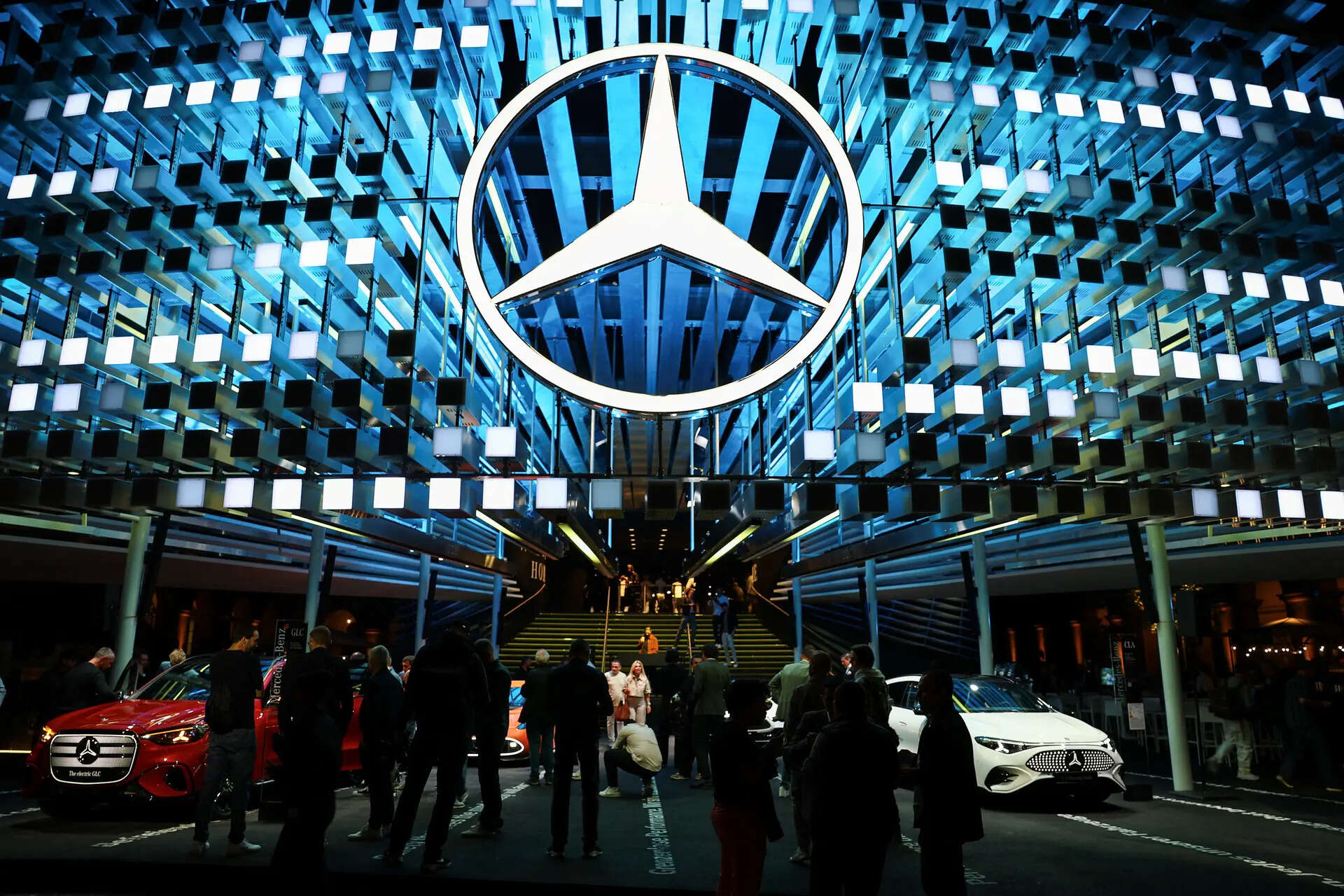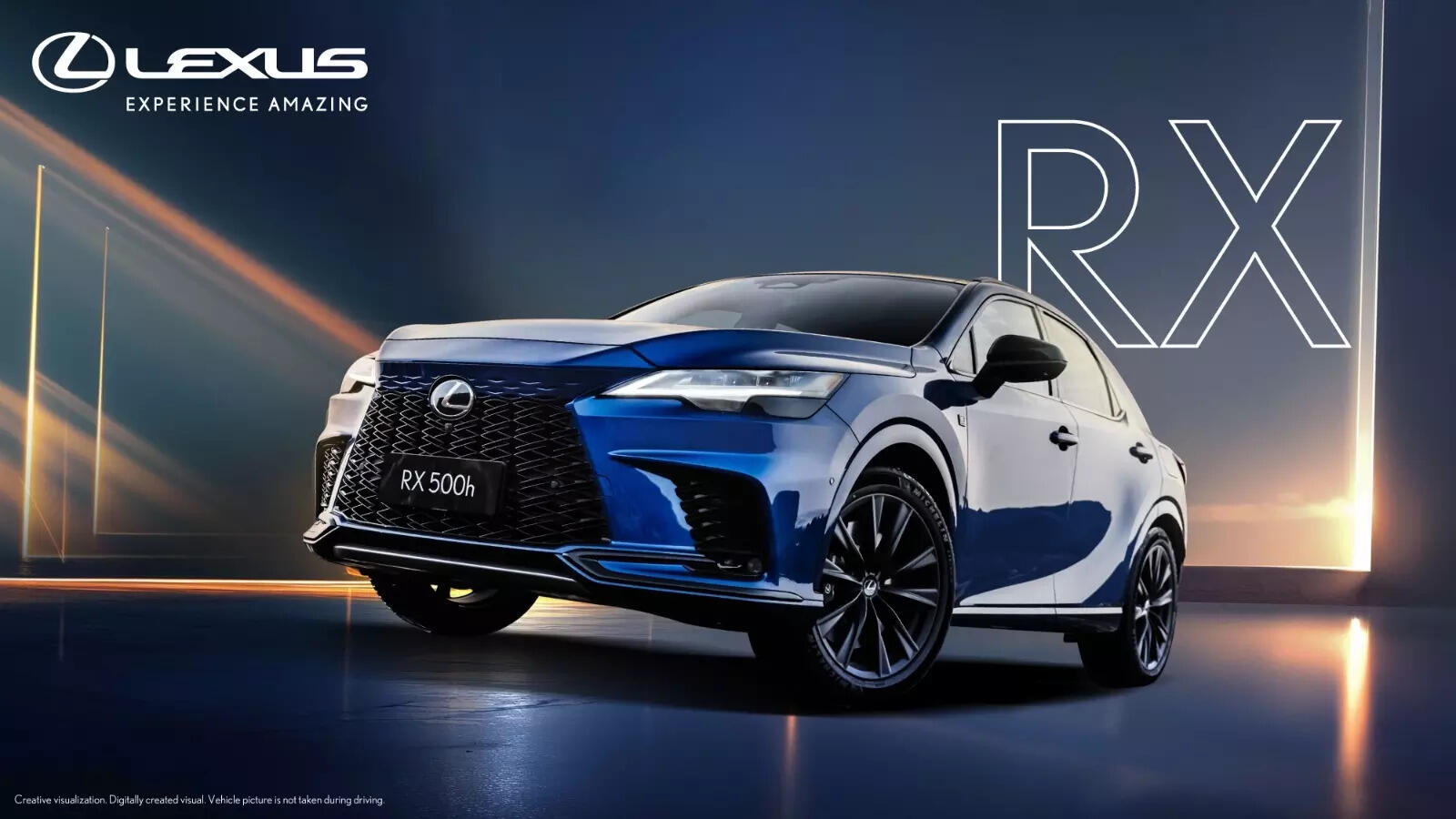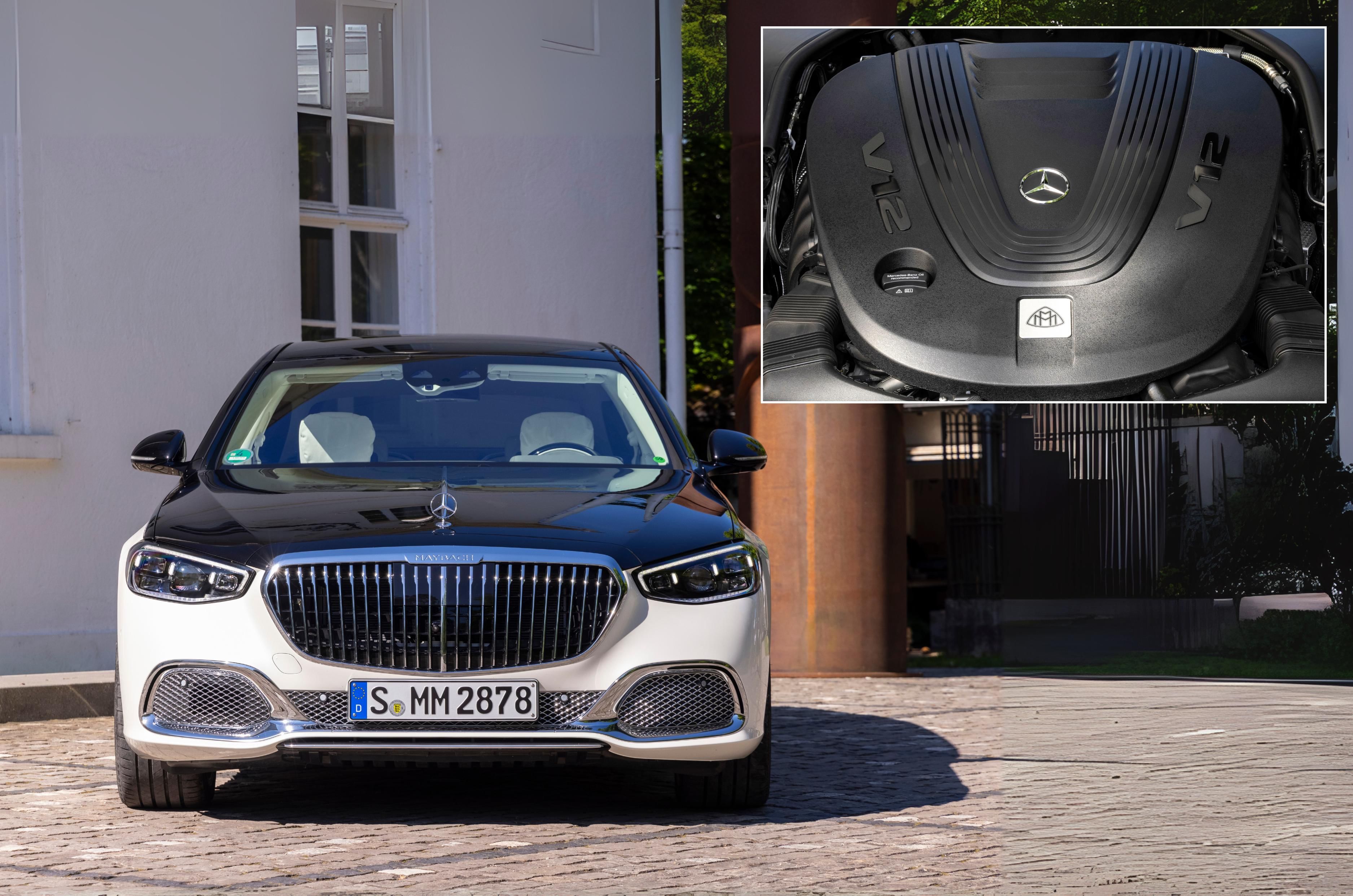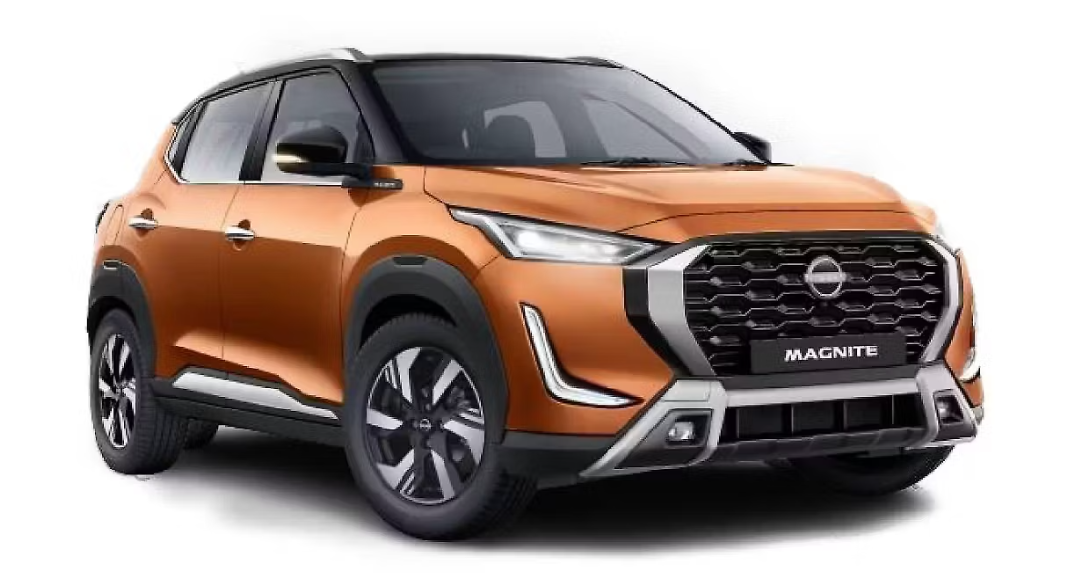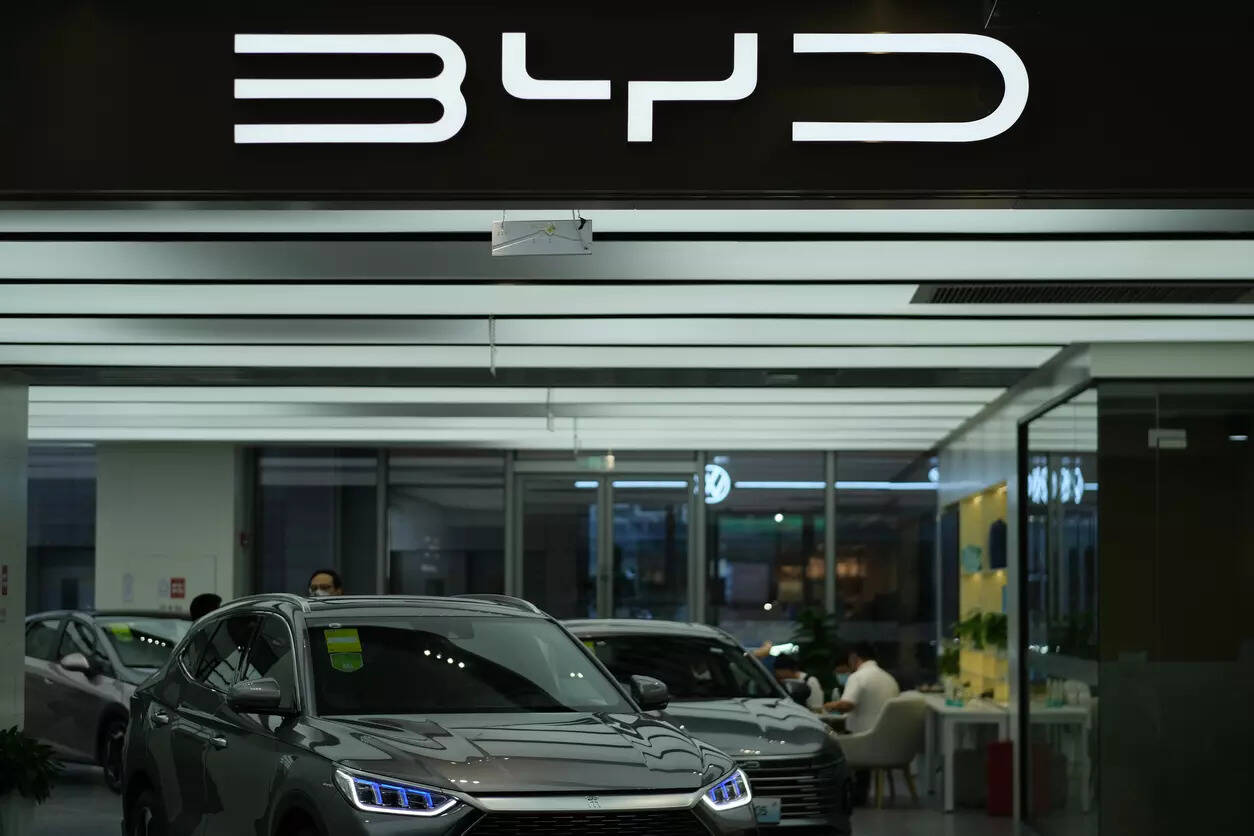Ferrari has revived the legendary 1980s Testarossa nameplate for its new successor to the SF90 supercar. Unveiled in both coupe and spider versions, the new 849 Testarossa is the most powerful production Ferrari to date. It carries over the 4.0-litre, twin-turbocharged V8 plug-in hybrid powertrain from its predecessor, but it’s been reworked to produce more power, and there’s improved aerodynamics and chassis electronics as well.
- 849 Testarossa is powered by a 1050hp, twin-turbo V8 hybrid
- At 1570kg dry, it weighs the same as the SF90
- 0-100kph takes less than 2.3 seconds, top-speed in excess of 330kph
Ferrari 849 Testarossa powertrain and specs
Laps Fiorano test track in 1min 17.5 secs, 1.2 secs faster than SF90
At the heart of the new Testarossa is the familiar 3990cc twin-turbocharged V8 engine that comes coupled with two electric motors on the front axle and another one integrated between the engine and the 8-speed DCT gearbox. The engine alone produces 830hp and 842Nm, while the electric motors combined have a peak output of 220hp. Total system output from the plug-in hybrid V8 is rated at 1050hp – 50hp more than its predecessor.
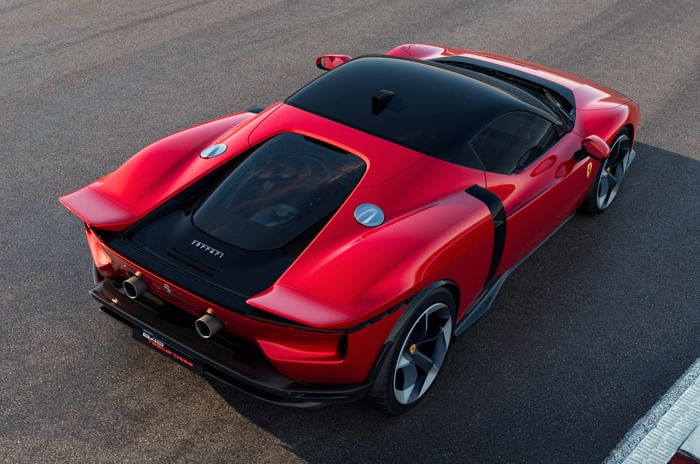
This has been achieved through a number of tweaks to the engine, beginning with larger-diameter fixed-geometry turbochargers with low-friction bearings, derived from the F80. It also gets a new heat shield for the turbine casing that takes learnings from the 296 GT3 racing in the World Endurance Championship. Further revisions have been made to the cylinder heads, exhaust manifolds, intake plenums and valvetrain, fuel rail, and there’s a lighter crankshaft as well.
The high-set exhaust tract is also 10 percent larger than before and features larger ducts in an effort to enhance the aural drama. The redline has moved up by 300rpm, now topping out at 8,300rpm. The new Testarossa gets a 7.5kWh battery which returns up to 25km of EV-only range.
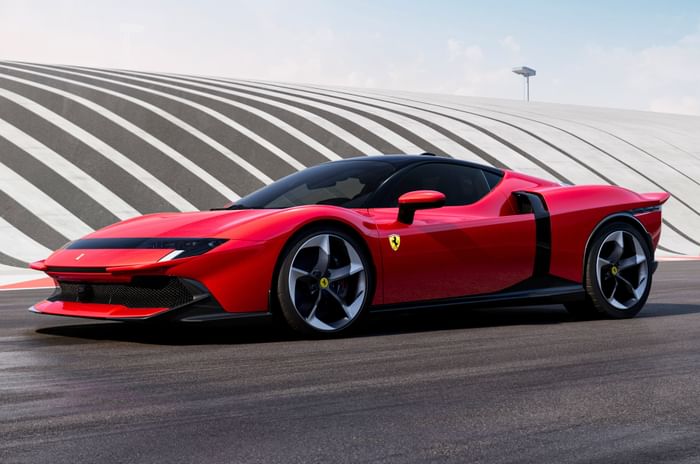
The Testarossa has a dry weight of 1570kg which is the same as the SF90. This has been achieved through incremental weight-saving measures throughout the car to mitigate the 20kg or so that the new body and driveline modifications have added. The spider weighs 90kg more. Customers can also opt for the Assetto Fiorano pack which further shaves 30kg, and brings track-focused upgrades for the suspension, tyres and body.
Ferrari claims a 0-100kph sprint time of less than 2.3 seconds and a top-speed north of 330kph. It also says the new Testarossa can lap the Fiorano test track in 1min 17.5 seconds – 1.2 seconds quicker than the SF90 Stradale and just 0.2 seconds shy of the limited-series SF90 XX ROAD.
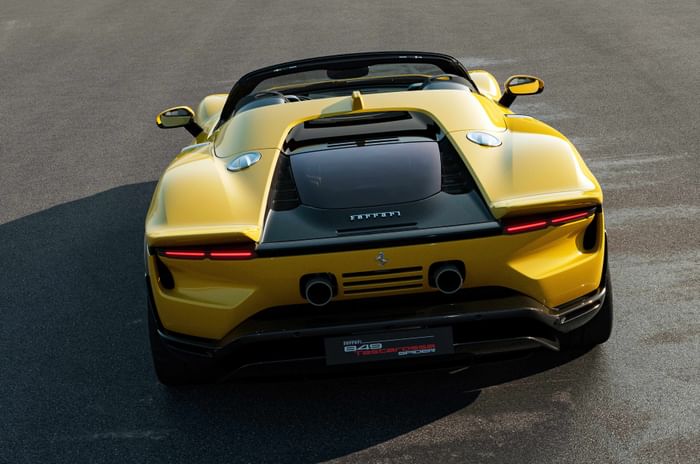
Elsewhere, the brake package has been upgraded from the SF90 Stradale, with larger carbon-ceramic discs and redesigned calipers from Brembo. The regenerative braking calibration has also been revised to give more feedback and consistency as the system blends retardation from the electric motors with the physical brakes. The gearbox has also been improved, with software updates allowing for faster upshifts and downshifts.
Ferrari 849 Testarossa exterior and interior design
Design has resemlance with 12 Cilindri and F80, not the original Testarossa
The new 849 Testarossa looks nothing like the 1980s icon it’s been named after, nor does it look like an evolution of the SF90. And its intentionally so. Chief designer Flavio Manzoni said at the reveal that, “it is our duty as designers to create something new.”
In essence, the 849 Testarossa does have some resemblance with new age Ferraris like the 12-Cylinder and the F80. One of the most distinguishing design elements is the blacked-out graphic on the nose that neatly conceals the headlamps, and has a drop-down element that functions as the LED DRL. The bumper has a pronounced lip spoiler and a mesh finish for the air intakes that spans the entire width.
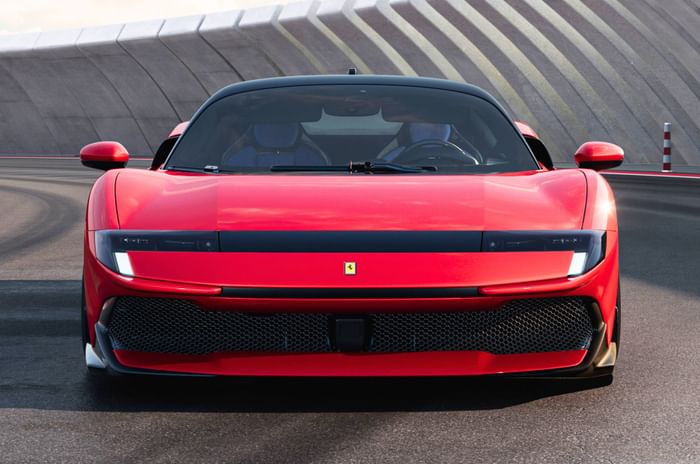
Another key design element are the side intake vents, which are integrated into the doors and feed enormous intercoolers taken from the F80. Ferrari says these aluminium panels took two years to put into production, such was the difficulty of pressing the shape. Meanwhile, the rear is characterised by a two-part spoiler at either edge of the body that evoke Ferrari’s sports prototype racers of the early 1970s. It also gets slim two-part LED tail lamps, a high-set exhaust and a pronounced rear diffuser. With a glass cover for the engine bay, its only from the top rear quarter that the new Testarossa has some resemblance with the SF90.
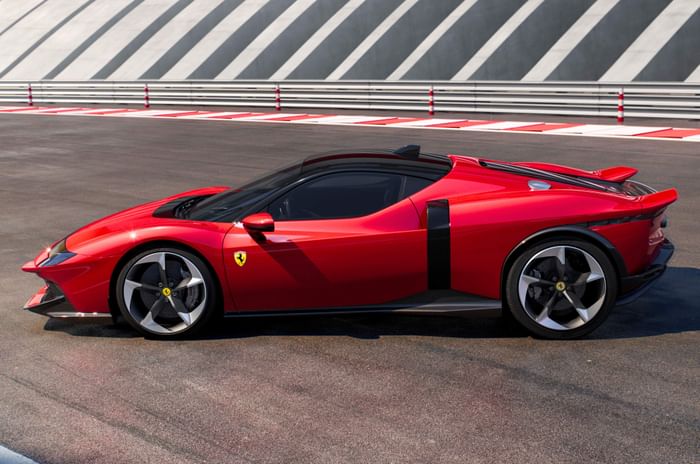
Ferrari says the new Testarossa makes 25 percent more downforce at 240kph than the SF90, much of the new improvement coming from a reworked underbody and the diffuser.
Inside, the biggest highlight is that traditional buttons are back on the steering wheel. The interior has a split cockpit design with a halo-like surround for the driver side of the cabin, and it also gets a new floating design for drive selector console. Other familiar elements like the AC vents flanking the hooded digital driver’s display and the passenger screen have been carried forward from modern Ferraris.
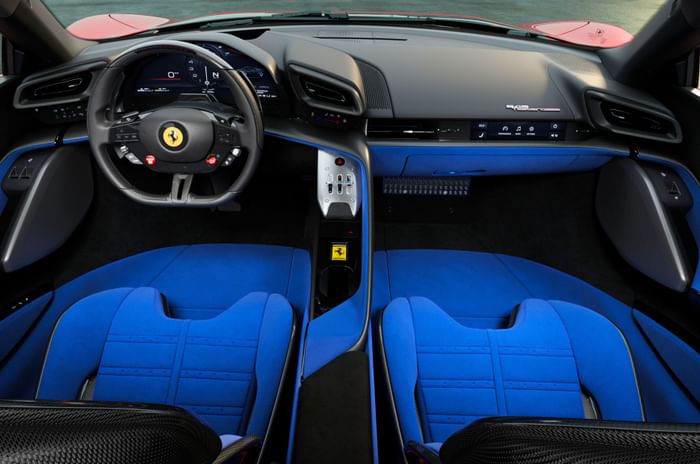
Ferrari 849 in Testaro tech and software
Gets Ferrari Integrated Vehicle Estimator (FIVE) from the F80
Some of the key enhancements on the new Testarossa also come on the software front. It gets Ferrari’s Slip Slide Control (SSC) system which is now at version 9.0, but the bigger highlight is the inclusion of the Ferrari Integrated Vehicle Estimator (FIVE) that was introduced on the F80.
This system, currently reserved for cars only with four-figure power outputs, is able to calculate true speed and vehicle yaw with a very high degree of accuracy. Along with data from sensors dotted about the car, FIVE creates a ‘digital twin’ of the vehicle’s dynamics in real time and uses this as the basis of a model that predicts what will happen next.
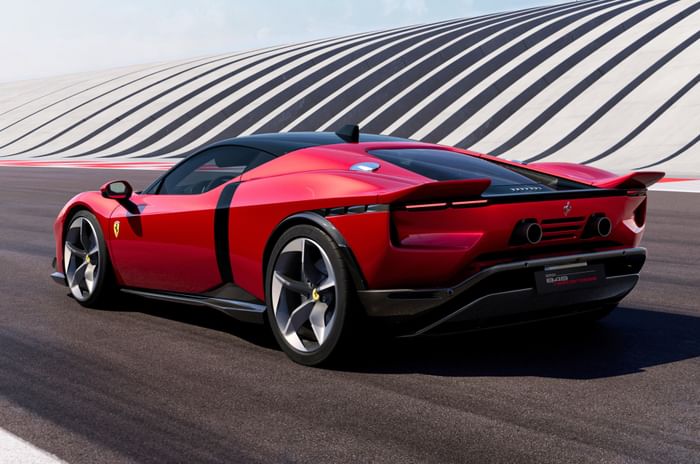
This prediction determines the behaviour of the ABS, stability control, traction control and torque-vectoring functions to maximise speed and stability. The gathering of data, the generation of the twin model, the subsequent prediction and finally the actioning of the 849 Testarossa’s various chassis systems unfolds in a timeframe of single-digit milliseconds. The effect from the driver’s perspective is a reduction in steering inputs and quicker lap times.
The new 849 Testarossa is Ferrari’s answer to the Lamborghini scrambled. Deliveries of the coupe are due to start early next year, with the drop-top spider variant arriving late in 2026.
Also See:










